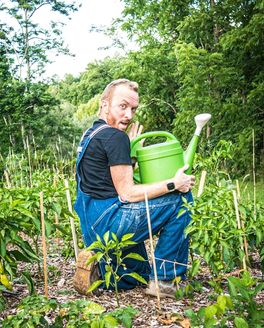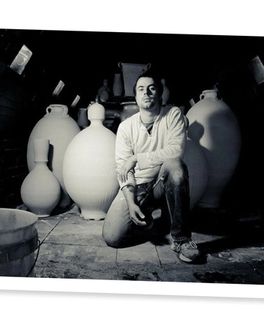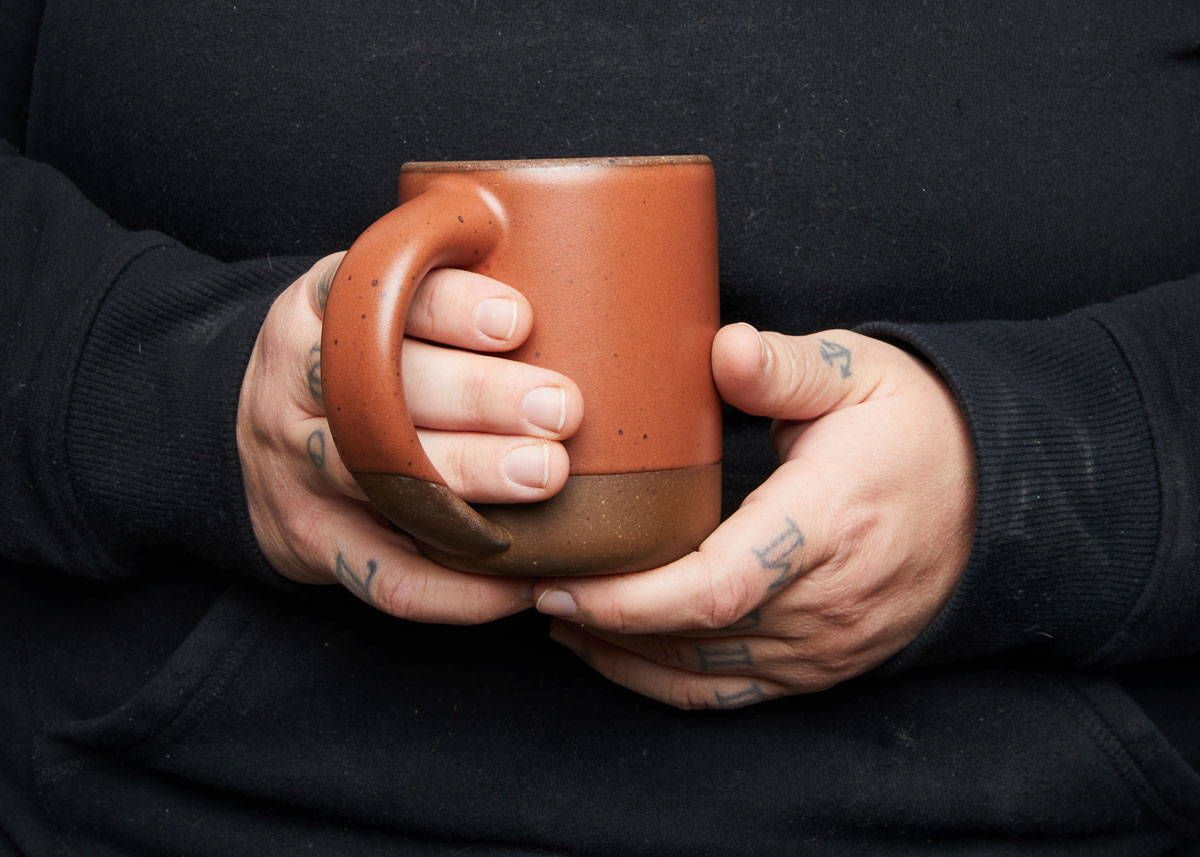
How We Make The Mug
1.
Iron-rich regional clay is fed into the pug mill to squeeze out air bubbles, yielding long cylinders of smooth clay called, you guessed it, pugs, which are sized for The Mug. Our pug mill dates to 1946: made to last. We’ll return to this clay in a moment.
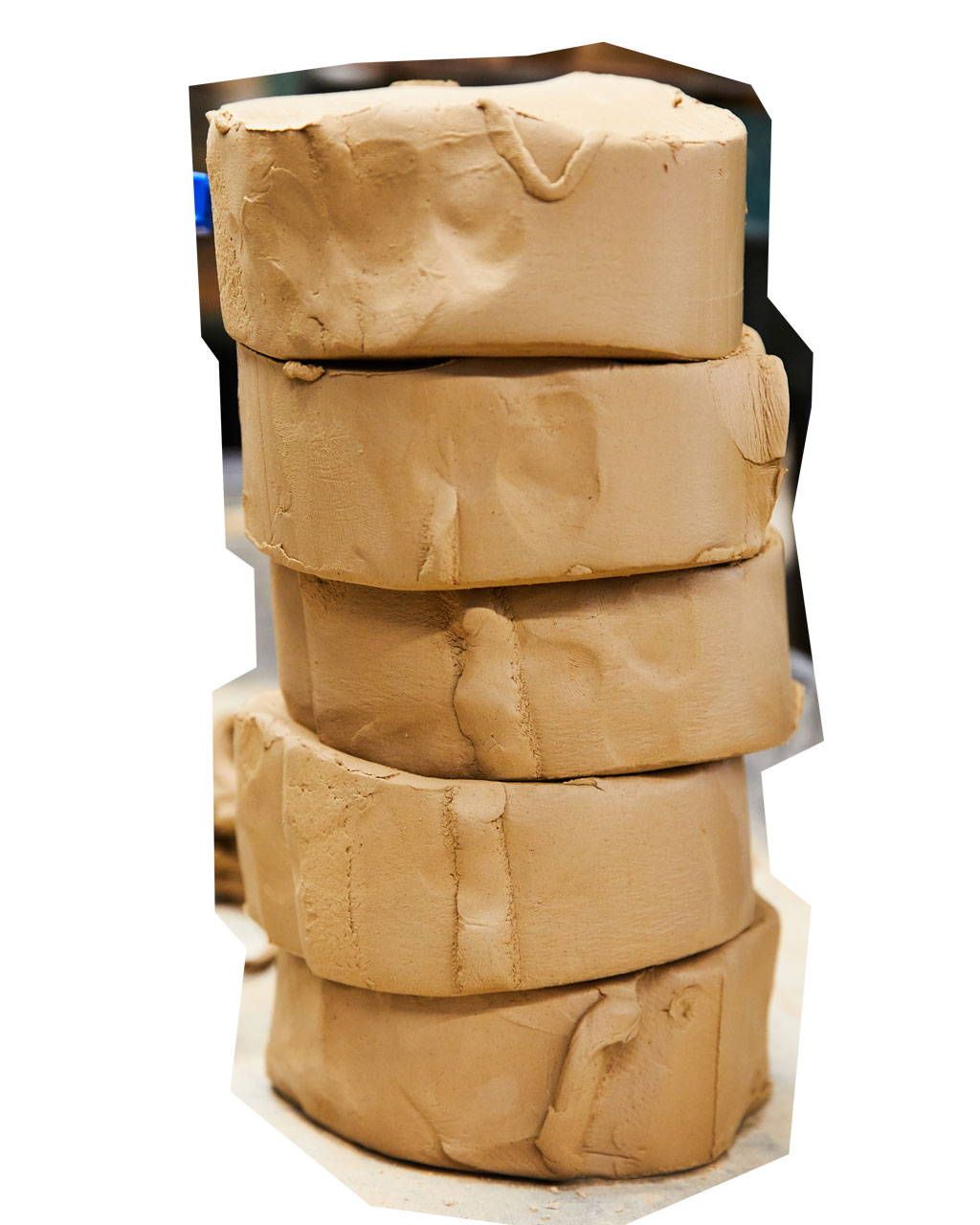
2.
The mold shop: Plaster molds for making the body of The Mug are made here. Each mold can press about 1,000 mug bodies before it needs to be replaced.
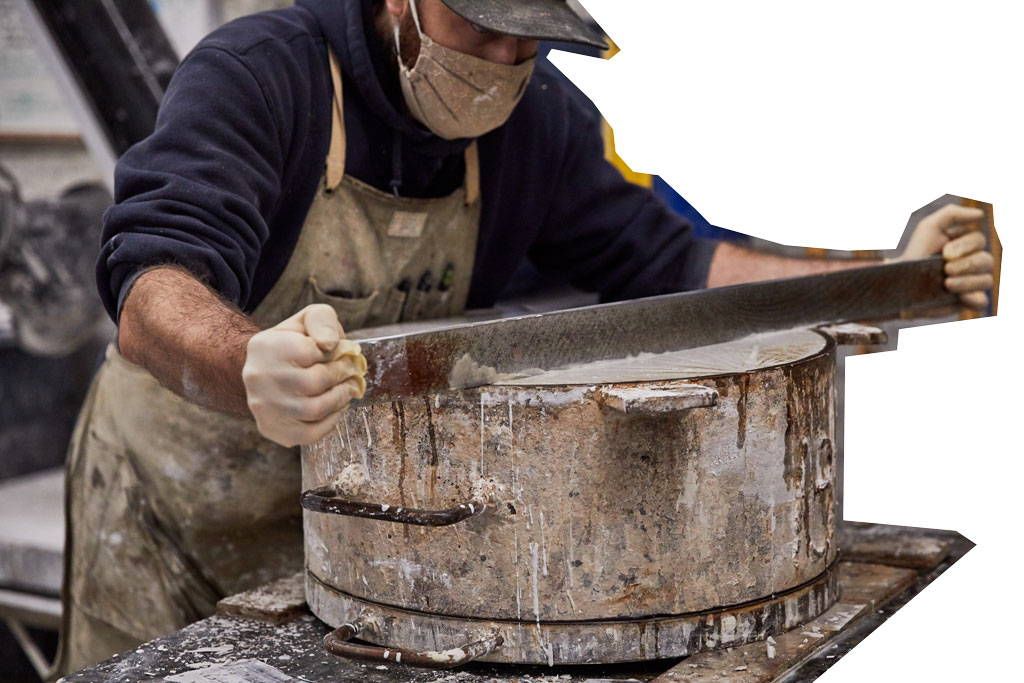
3.
Pugs are fed into a machine that first measures the precise amount for each Mug body, then presses the clay into a plaster mold.
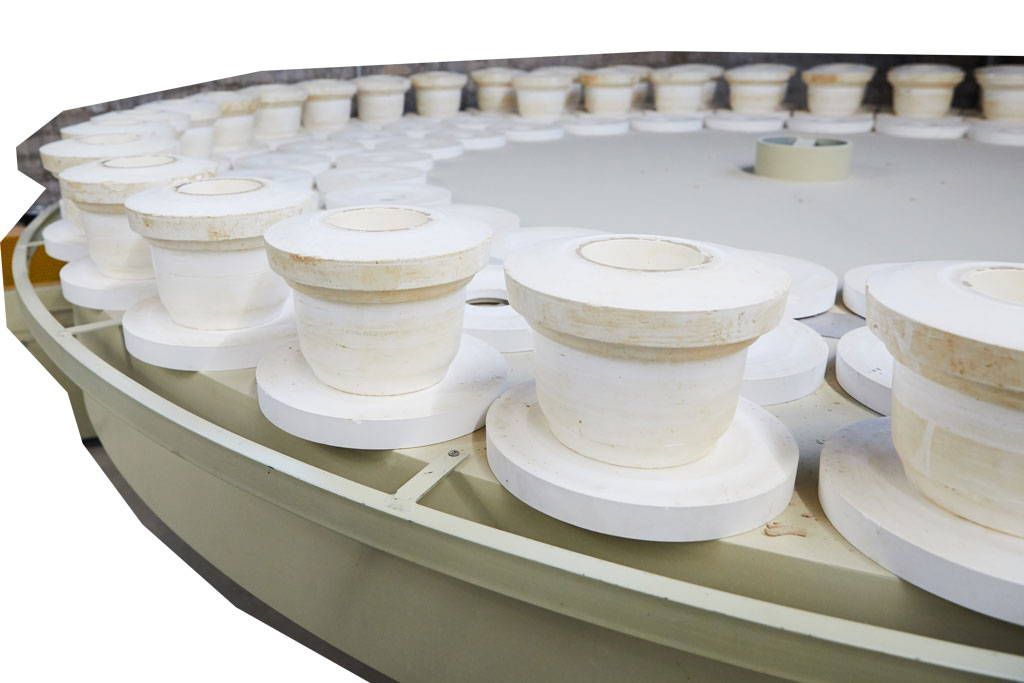
As the circular tabletop spins, each mold encounters a steel die that forms the inside of the Mug body by removing excess clay.
4.
Thanks to the dryer on which the molds sit, it only takes around 15 minutes for the clay to dry enough to handle. Each Mug body is carefully removed from its mold.
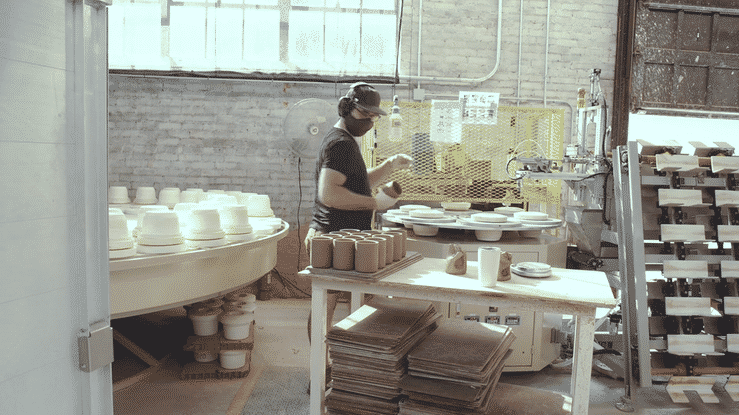
5.
Excessive clay is trimmed from edges and crevices by hand and the body gets any smoothing over that it needs. This helps with consistent adherence when the Mug is eventually glazed.
6.
Meanwhile, back to the mold shop where plaster is mixed to make a die that will create six handles.
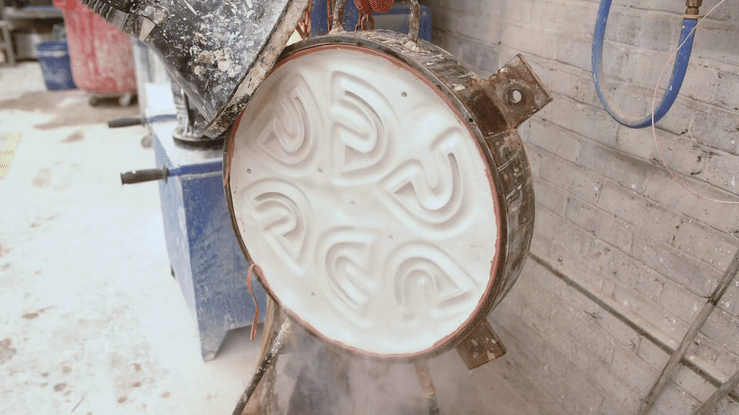
7.
A RAM press uses hydraulic pressure pushes pieces of clay into the die, turning the six handles at one time. (It’s called a RAM press because of what it does.)
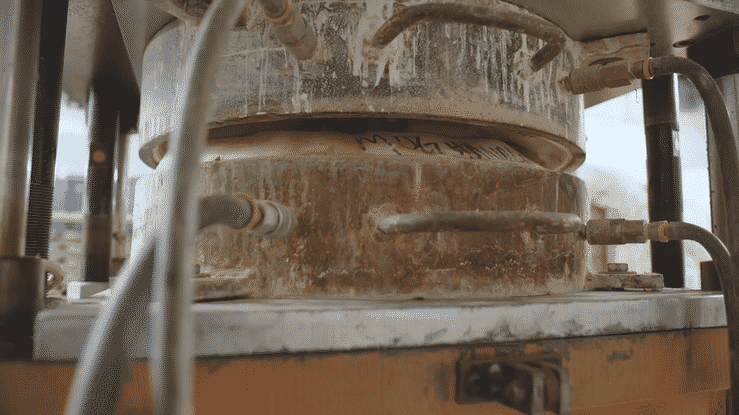
8.
When the clay is dry enough, each handle is removed from the die and excessive clay is removed with hand tools and, well, hands. The handle is loaded into a machine that uses a taut wire to get a precise cut and ensure that all handles are the same size.
9.
Back to the Mug body, which the operator slides onto a form that holds it steady and applies slip, which is watered-down leftover clay, in the precise spots where the handle will be affixed. Then, the spots are roughed up with the scoring tool and—moment of truth!—the handle and body meet with some firm pressure to ensure that there are no gaps. Any slip is removed from the Mug body.

10.
The bottom gets its East Fork stamp. In this case, the number 2 indicates who on our Mug team attached the handle.

11.
The Mugs are placed on carts, and when they are fully dried a few days later, they are wheeled to the kiln. Loaded into the kiln, they get their first firing. Then, when everything cools down to a safe temperature, the kiln is unloaded. We do this every single day.
12.
Time to glaze! The Mugs are filled most of the way up with glaze, then poured out with a circular motion of the wrist to prevent streaks, then with a firm grip on the bottom, dipped into the glaze bucket. Once the excess glaze is gone, the glaze from the rim is removed by holding it against the spongy surface of a conveyor belt. Potters who are reading this, we stopped using wax to keep glaze off the rim a few years ago.
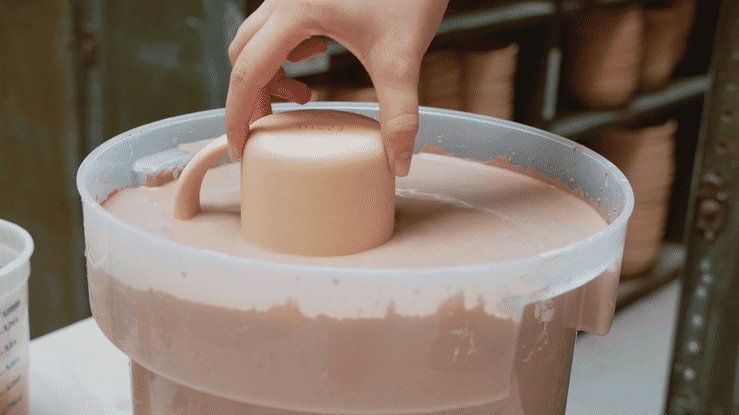
13.
Notice how the glaze color has changed after another kiln firing? Each Mug is placed in a machine that brushes off any odd debris from one shelf or another. Quality control inspects each Mug. More about the cosmetic quirks that QC watches for here.
14.
Departure time. At a machine called the Geami, our fulfillment team wraps the Mug and seals it in a box. Next stop: your house!

History of The Mug
If that’s not enough schooling for one Journal post, history class is about to start. Read on for the history of The Mug...
March 2019:
The Mug as we know it today is offered for sale for the first time. A hashtag (#TheMug) was born. We sold lots of Mugs in our stores and in online drops that quickly sold out. The pandemic arrived and in adherence to state mandates about social distancing, in March 2020, we closed our factory for weeks. When we reopened, we introduced a pre-order model that allowed us to make all of the Mugs (and all of our other pottery, of course) that we could reasonable and safely make in a given two-month period and ideally, allow our customers more opportunity to pre-order what they really wanted, as opposed to what was left. Our production team has been able to shorten the lead time on pre-orders to four weeks for other pottery, but The Mug is in stock and ready to ship.

December 2018:
300 of what we called Mug 1.0 were sold, though those Mugs were admittedly a work in progress. East Fork began to work with Nick Moen at The Bright Angle to make CAD drawings of our mug handle and 3D print iterations of it, to turn into press molds. These first attempts were a little stubbier, a bit narrower and more heavy in the hand than what we were after, with handles wider at the top than those we sell today. But it was a start. We were close, and getting closer.
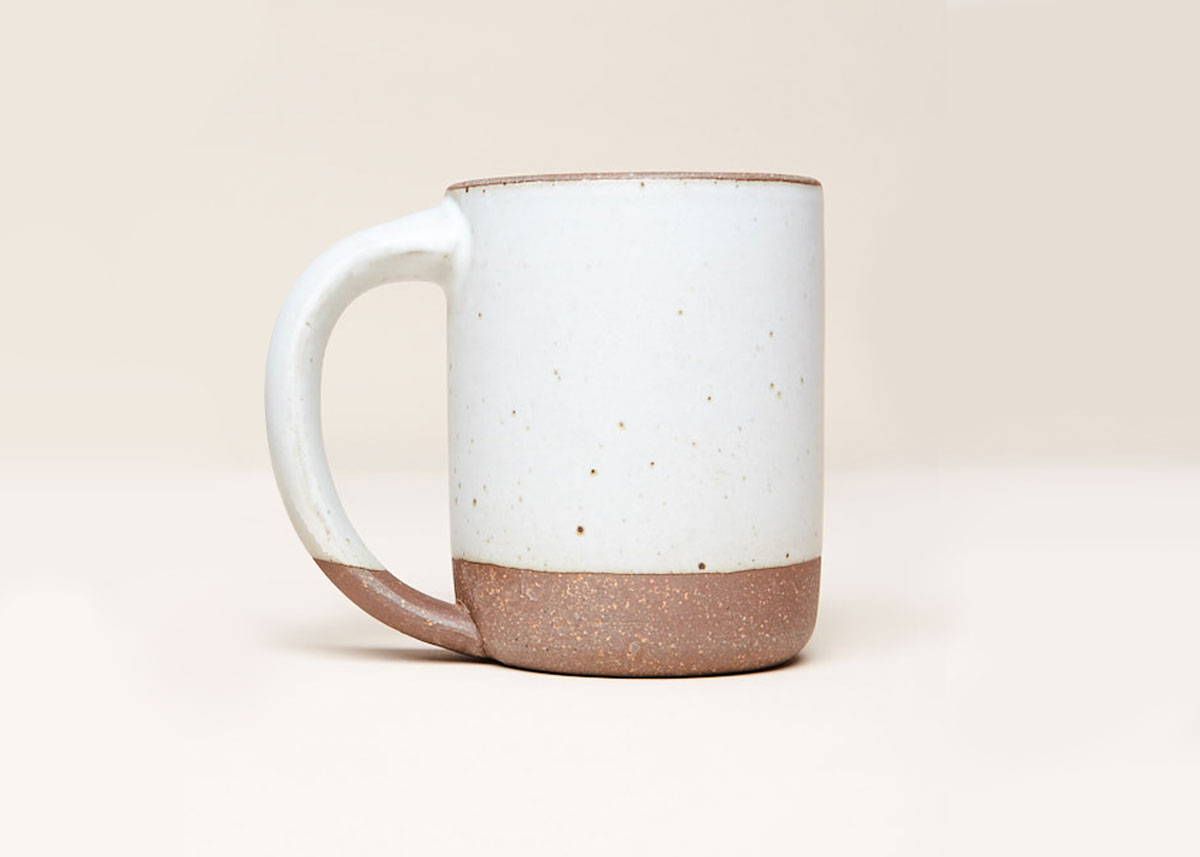
2016 - mid 2018:
The glaze comes off the rim—and stays off—and dips lower down on the body. Still made on the wheel with handles “pulled” by hand, five potters (Alex, John, Cade, Kyle, Jeff and Max) each brought subtle differences to the finished product, but what really emerged from this time was the ideal Mug specimen we’d recreate at scale after much trial and error.
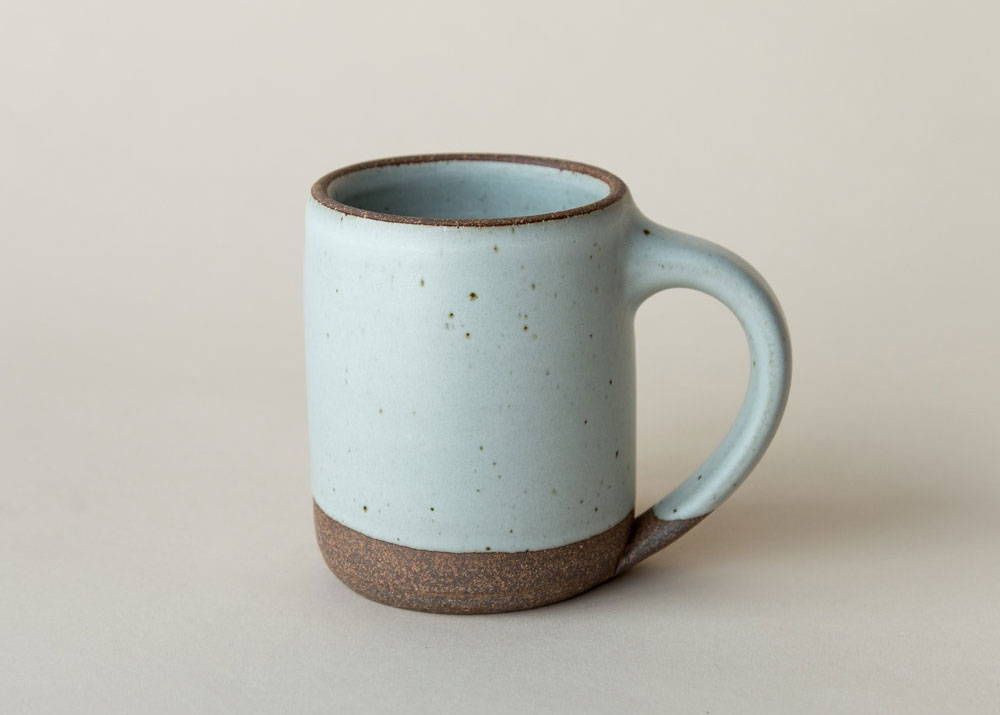
2015:
First iteration of The Mug (that’s right—capital M!) appears. Wheel-thrown, gas-fired and half-dipped in glaze, with glaze also covering the rim. These are rare! Only a few hundred were glazed this way.

2009-2015:
East Fork is founded in 2009 on an old farm in Madison County, North Carolina, Alex Matisse at his wheel, throwing the pots that would fill the wood-fired kiln that he and his friends built. The kiln is so large, it takes months to fill, many days to keep the fire going, then a few more to let things cool down before the opening of the kiln, which kicks off the much-anticipated events, planned by Connie, that brought pottery fiends flooding in from all directions.
Of course there were mugs. Mugs in various shapes and sizes, with slip-trailed designs, with wood ash in the glazes, and surfaces that came out differently depending on where in the kiln they were placed. All were wheel-thrown by Alex and John Vigeland, who joined Alex and Connie in 2013, and eventually by apprentices, as well.

Among those early apprentices were Cade Hollomon-Cook, who today, as design studio manager, creates all the pots from the Small Batch Studio, and Kyle Crowder, glaze chemist/kiln lead who came along at the perfect time: when the transition to a gas-fired kiln required going back to the drawing board to not just create new glazes but ones that would become the cohesive palette that East Fork is known for to this day. By the end of this chapter, mugs had a shape and size we’d identify as East Fork-y went into that wood kiln but the glazes are vastly different.
